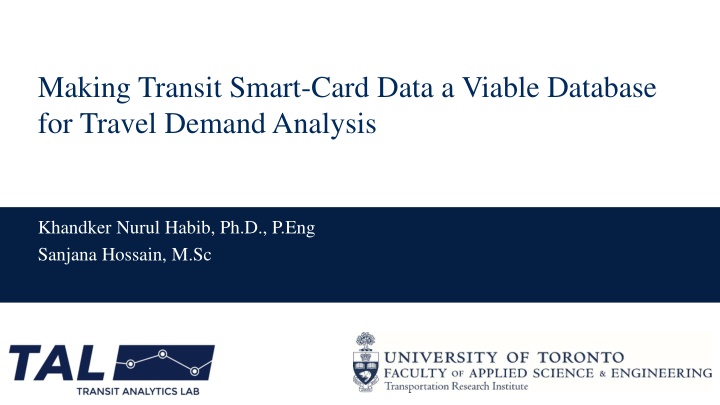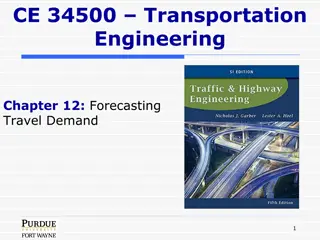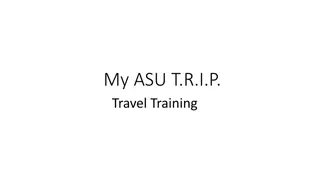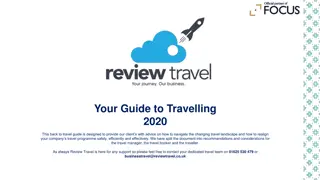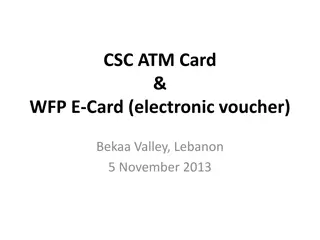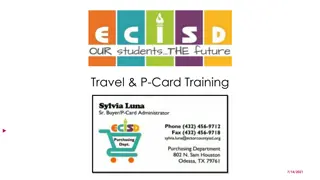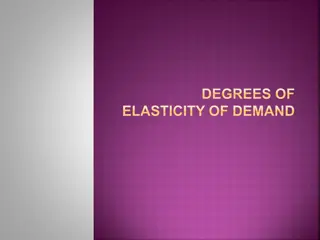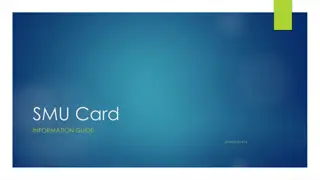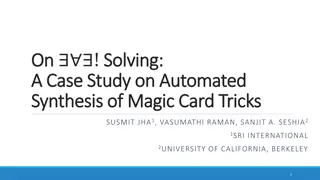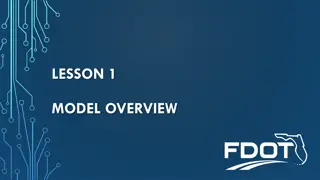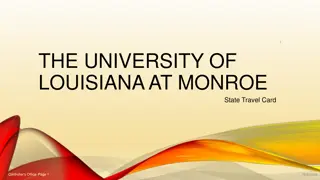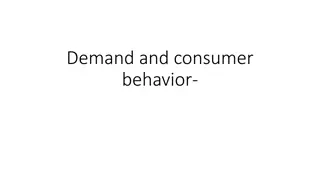Enhancing Travel Demand Analysis Using Smart Card Data
Leveraging smart card data for travel demand analysis offers a cost-effective and efficient alternative to traditional O-D surveys. While smart card data alone may have limitations at the stop/station level, supplementing it with model-based inferences from companion datasets can enhance the accuracy and completeness of transit trip details. By combining smart card data with other sources such as customer satisfaction surveys and regional household travel surveys, a more comprehensive understanding of transit user behavior and demand distribution can be achieved, leading to improved travel behavior representation and better insights for decision-making in transportation planning.
Download Presentation

Please find below an Image/Link to download the presentation.
The content on the website is provided AS IS for your information and personal use only. It may not be sold, licensed, or shared on other websites without obtaining consent from the author.If you encounter any issues during the download, it is possible that the publisher has removed the file from their server.
You are allowed to download the files provided on this website for personal or commercial use, subject to the condition that they are used lawfully. All files are the property of their respective owners.
The content on the website is provided AS IS for your information and personal use only. It may not be sold, licensed, or shared on other websites without obtaining consent from the author.
E N D
Presentation Transcript
Making Transit Smart-Card Data a Viable Database for Travel Demand Analysis Khandker Nurul Habib, Ph.D., P.Eng Sanjana Hossain, M.Sc
Outline Introduction Filling Gaps in Smart-card Dataset Data Fusion Framework Example of PRESTO data and Transportation Tomorrow Survey Conclusions Travel Demand Modelling Group: TDMG 2
Introduction (cont.) Reliable and up-to-date origin-destination (O-D) information is vital for transit demand analysis. Regular O-D surveys (or travel surveys) are costly to undertake. Smart-card transaction data can provide a viable alternative. Continuously collected. Can be summarized into daily, weekly, monthly and annual basis. Can provide accurate picture of transit demand and variations. Travel Demand Modelling Group: TDMG 3
Introduction However, smart-card data alone is not sufficient Data are the stop/station level: even data may not have precise origin-destination stop/station. Further inferences are necessary to make the dataset complete. Station/stop level data does not reveal actual origin and destination of transit trips. Transit users profiles are missing. Heuristic based imputation of trip origin-destination from smart- card data can be misleading and wrong Overlooks park & ride and kiss & ride access options. Under-estimate spatial dispersion of transit demands. Travel Demand Modelling Group: TDMG 4
Supplementing Smart-Card Data by Model-based Inference Smart-card data can be expanded by using data fusion methodology exploiting companion datasets, e.g. customer satisfaction survey, transit user survey, regional household travel surveys, etc. Transit trip details from a companion dataset to model trip details that are missing in smart-card datasets: Trip origin location Trip destination location Access/Egress travel modes Socio-economic profile of the transit users Travel Demand Modelling Group: TDMG 5
Smart Card Data to Complement Travel Survey data PRESTO Card data Transportation Tomorrow Survey Data Data Fusion Reweight the combined sample Improved travel behaviour representation by TTS Travel Demand Modelling Group: TDMG 6
Smart Card Data to Complement Travel Survey data PRESTO Card data Customer Satisfaction Survey Data Fusion Transit User Profile, Demand Distribution and Users Behaviour Travel Demand Modelling Group: TDMG 7
Data Fusion Framework Travel Demand Modelling Group: TDMG 8
Conclusions Fusing smart-card data with companion data sources can provide up-to-date (and continuous) transit demand levels and distributions. It is important to use a model-based fusion methodology to make sure that the results are realistic. Once developed, the model-based fusion framework can be periodically updated. Travel Demand Modelling Group: TDMG 9
Partners: Metrolinx, NSERC, FASE UofT Partners: Metrolinx, NSERC, FASE UofT Questions Questions 10
